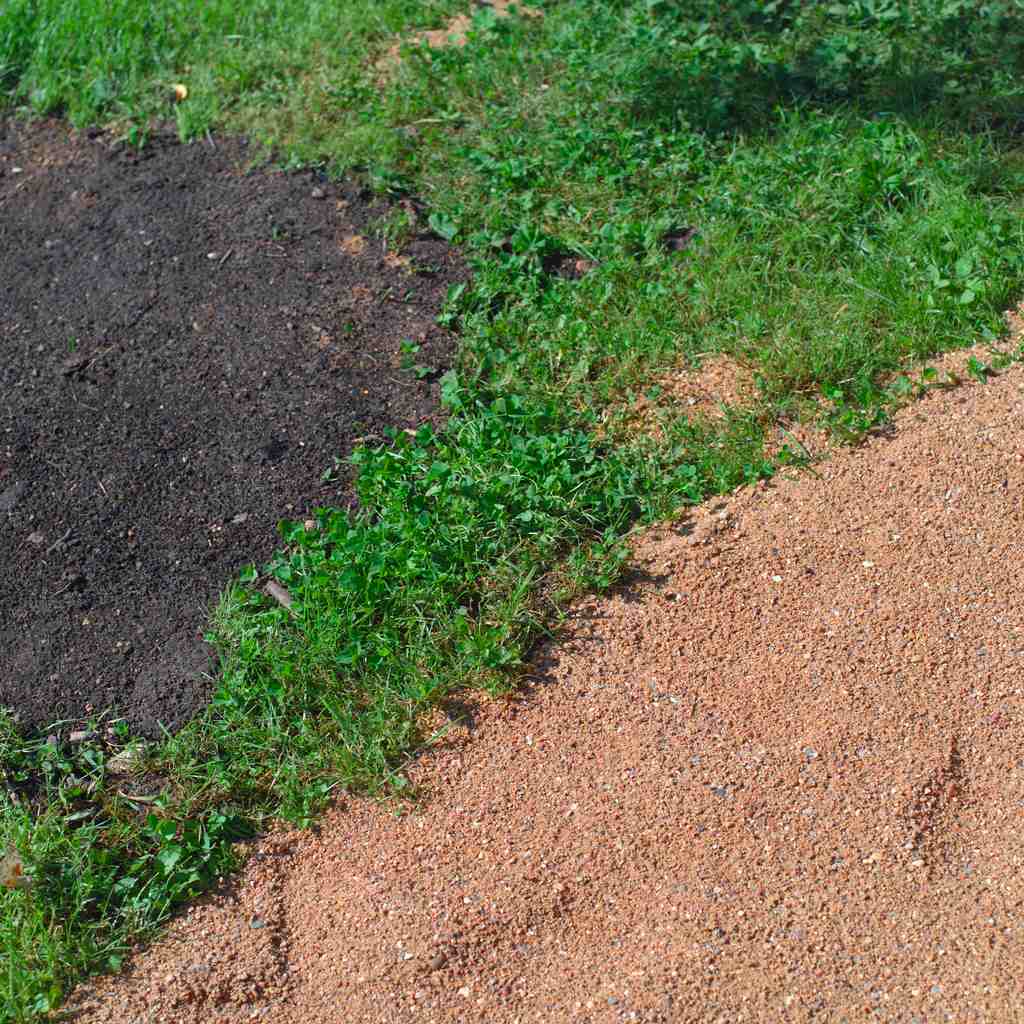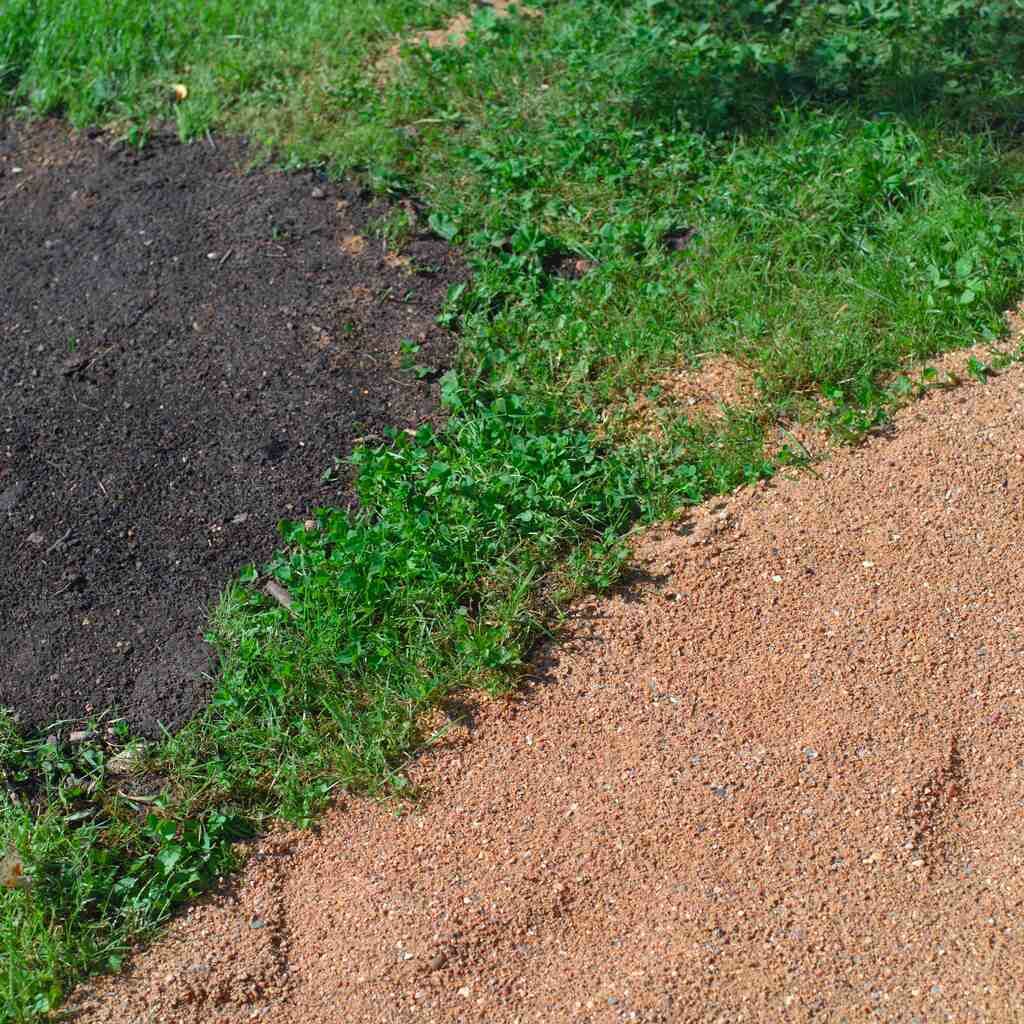Is Sand Good For Lawns? Top Dressing Your Lawn With Sand
There’s more to your lawn than just the grass you grow there. This is why top dressing your lawn is an important part of lawn care. But the question is, what is the top dressing material for your lawn. For some, sand is a good dressing material and it has many advantages. Others prefer soil or other materials.
If you have a bumpy lawn or it’s littered with holes, then top dressing it is usually the right solution. There are many reasons why you’d want to use sand over other types of top dressing. This post covers those reasons, lists the benefits of sand, compares sand against other materials, and shows you how to apply sand to your lawn.
Top Dressing your Lawn
The practice of top dressing started with golf courses. Some types of turfgrass tend to produce a lot of thatch. From there, homeowners started to adopt this process to keep their lawn looking its best. After all, there’s no reason why your lawn shouldn’t look well-manicured and meticulous like the golf course.
But as usual, there are voices that maintain that using sand as a top dresser for your lawn can bring more harm than good. They stress that sand prevents the grass from getting enough nutrients from the soil. There are also claims that sand reduces the fertility of the soil. But as every gardener will tell you, sand is mixed with heavy soil and clay all the time to improve drainage and aeration.
Also if you maintain your lawn with fertilizing and watering, the grass will not be impacted by the sand. And if the soil in your lawn is mostly loamy or sandy, then adding a thin layer of sand will not make much difference to the soil acidity, fertility, or pH levels.
Reasons for Top Dressing
Whether you have a lawn with many obvious flaws or you’re a golf course manager, there are many reasons why you’d resort to top dressing. For the most part, you use sand to cover the flaws in the lawn.
- Even out the lawn: This is one of the most obvious reasons to use sand for top dressing. An uneven lawn not only looks bad but doesn’t encourage the turfgrass to grow evenly. When you water it, the water pools in the low areas. So you cover those areas with sand to level out the lawn.
- Fix holes: Often you’ll find holes in your lawn that need fixing. If the hole is about 2 inches deep, you can easily remedy it with sand. First, you’ll need to raise the turfgrass in that area using a shovel. Then apply a thick layer of sand to fill up the hole. Finally, place the grass back and water the spot to help the sand settle.
- Prevent thatch: Depending on the type of turfgrass you have in your lawn and the amount of care and maintenance you provide, thatch might crop up and attach itself to the pets’ hide and even your clothes. Apply sand to prevent the growth of thatch.
Remember to fertilize the lawn before you apply the top dressing. This allows the grass to grow strong and handle the change in the soil after the sand is applied. Some people like to fertilize the lawn after applying the sand, but that puts the grass under a lot of stress, especially if you fix too many holes or even out too many patches.
Common Top Dressing Materials to Use
As we mentioned, when it comes to using sand to top dress a lawn, many people are divided about the issue. However, experts recommend that you analyze the soil in your lawn and choose a suitable material that matches it. That’s the golden rule for top dressing. If you use a different material, it could interfere with the growth of the grass and might even leave barren patches where you applied it. Here are common materials to consider.
- Sand: By far the most popular top dressing material for your lawn. It works best when your lawn is sandy or loamy. But even if you have clay soil, sand can improve the drainage and aeration of the lawn and improve the growth of the grass.
- Topsoil: When in doubt, try to use the same soil in your lawn to cover holes and level out the lawn. You won’t risk changing the composition of the lawn or impact the grass in a negative way. On the other hand, it won’t improve the fertility of the soil either.
- Compost: Many experts recommend using compost over sand or soil since it enriches the soil and doesn’t have any of the negative effects those two have. Make sure you’re using a finished product and that the compost is not contaminated with weed seeds or other invasive plants.
Why is Sand Good for Lawns?
So what makes sand such a popular top dressing material for lawns? As we mentioned there are many camps and there are those who swear by sand and all the good it does to the lawn. But the other camp maintains that compost increases the fertility of the soil and actually make the grass grow better and healthier. Granted, sand doesn’t add much or any nutritional value to the soil. Yet, it has many benefits.
- A layer of sand on the lawn improves the firmness of the soil. Too much organic material makes the soil a little spongy due to the fermentation and abundance of insects in the topsoil. Use sand to make the soil firm and healthy.
- Sand improves the drainage of the soil and aeration. Both of these are important factors as far as the root system of the grass is concerned. A squishy or compact soil is not ideal for turfgrass of any kind due to poor drainage.
- Sand also protects your grass against damage and speeds up recovery. This is true when you have a lot of foot traffic. Sand cushions the grass leaves against the damage.
- Sand grains also fill up the void between the leaves and stem of the grass to create a smooth look.
- If you have issues with thatch, sand is ideal for dampening the piling up of thatch and keeping your lawn looking lush and meticulous.
How to Use Sand in your Lawn
If you have decided that sand is the best top dressing material for your lawn, then you need to know how to use it. Needless to say, this is not as simple as throwing a handful of sand willy nilly and hope for the best. There’s a method to use when you apply sand to repair your lawn. Here’s how you need to go about it in easy steps.
- Get all the equipment and material you’ll need before you start. You’ll need sand, a spade, topsoil mix, mulch, and grass seeds.
- Check the pH of the soil before you begin. That way you can adjust the soil while also applying the top dressing.
- Use the spade to open up the top layer of the grass or thatch. This allows the sand to penetrate the dense leaves and stems of the grass and thatch.
- Mow the grass to help you work on it but don’t cut it too short.
- Remove any debris, thatch, clumps of grass, or other foreign material.
- Work in small areas of one square foot at a time.
- Spread the top dressing in a smooth motion trying to keep it as even as possible throughout and no thicker than a half-inch tops.
- If you’re filling a hole, then mix the sand with topsoil in equal parts to bring the hole even with the surface around it before replacing the chunk of turfgrass.
- Sprinkle the seeds in barren patches and use mulch to prevent the wind from blowing away the seeds.
- Water the lawn thoroughly to settle the sand and help the seeds germinate.
Problems with Top Dressing with Sand
As with many DIY projects, a lot can go wrong if you’re not careful. And since sand is an abrasive material especially on the grass, you want to avoid some common mistakes that people make. One of those problems is not applying the top dressing evenly. As mentioned, sand is at best a neutral element that doesn’t improve the nutrition of the soil. At worst, it can prevent the grass from getting the nutrition it needs.
So always apply the sand evenly and use a rake to spread it and prevent little piles of it on the lawn. This could choke the grass. It’s also recommended that the first time you apply sand as a top dressing to go with a very thin layer. Anything around an eighth of an inch should do until you get a better handle on the process.
Also, don’t use sand as a top dressing for clay soil. This doesn’t loosen the soil as much as creates a cement-like composition. Top dressing sand is not the same as mixing sand with clay to improve drainage. You’re not mixing the sand with the soil, you’re just spreading on top of it which could have adverse effects.
Another problem comes from using contaminated sand. Make sure the sand is clean and doesn’t contain seeds of weed which would spread across the lawn and damage the turfgrass. If you can, try to use sterilized sand. That would eliminate the risk of invasive plants.
Tips for Top Dressing your Lawn
To avoid many of these mistakes and ensure that your lawn always looks its best, follow these top dressing tips.
- It’s recommended that you only apply the top dressing to the parts of the lawn that need fixing, not the whole lawn. This avoids the problem of raising the grade of the lawn with time after a few applications.
- Choose the right time to apply top dressing according to the type of grass you have. For warm-season grass, apply top dressing in the spring. For cool-season grass, the fall is the ideal time for it.
- Use overseeding in combination to top dressing to renew the grass in your lawn and keep it fresh looking.
- Always apply in thin layers of less than a half-inch every time. This doesn’t change the structure of the soil since the excess sand gets blown away by the wind.

